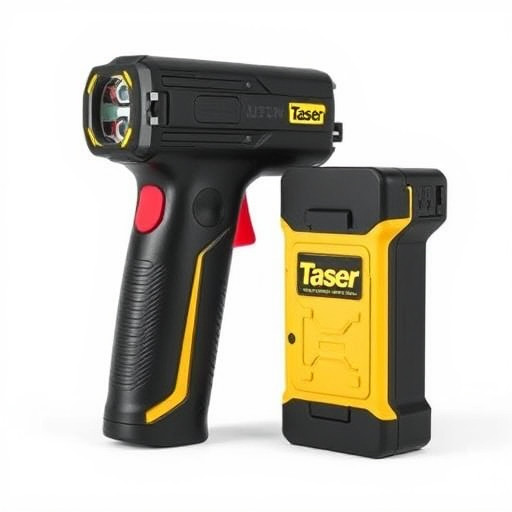In the world of personal safety devices, understanding the distinction between a stun gun and a Taser M26 is paramount. This article aims to demystify these popular non-lethal weapons, offering insights into their unique features and applications. We’ll explore what sets these devices apart, focusing on power, range, accuracy, and legal considerations. From the classic stun gun to the advanced Taser M26, discover the differences that matter when choosing the right self-defense tool for various situations.
What is a Stun Gun?
A stun gun, also known as an electronic control device (ECD), is a non-lethal weapon designed to temporarily incapacitate a person through electric current. It works by delivering a strong electric shock that disrupts muscle control in the target, causing them to experience intense pain and temporary paralysis. Stun guns are often used for self-defense by individuals who want to neutralize a threat without resorting to lethal force. They are popular among personal protection enthusiasts, security professionals, and law enforcement agencies alike.
Unlike tasers, which use two probes to deliver an electric shock over a longer distance, stun guns emit a single pulse of electricity from a shorter range. This difference in design results in varying levels of effectiveness and usage scenarios. While stun guns are generally easier to use due to their simplicity and smaller size, tasers offer more control and can be more effective against larger or more aggressive targets. Understanding these nuances is crucial when choosing between a stun gun and a taser for specific needs.
– Definition and basic function
A stun gun and a Taser are both non-lethal weapons designed to incapacitate an opponent, but they operate on distinct principles. A stun gun delivers an electric shock through metal prongs or points, disrupting muscle control in the target area, typically causing temporary paralysis and disorientation. It’s a direct contact weapon that relies on making physical contact with the assailant.
In contrast, a Taser (or Electronic Control Device) uses two thin probes connected to high-voltage, low-current electrical pulses. When activated, the Taser fires these probes into the target, delivering a powerful jolt of electricity that temporarily paralyzes them. Unlike stun guns, Tasers can operate at a safe distance, making them popular among law enforcement for crowd control and non-lethal force applications. The difference between stun gun and Taser lies in their design, range, and the specific way they disrupt an assailant’s motor functions.
– How stun guns work
Stun guns, also known as electronic control devices (ECDs), work by delivering a powerful electric shock to temporarily disable or disrupt an individual’s muscular control. They typically fire two small probes connected to thin wires, which make contact with the target and transmit an electrical current. This current interrupts the brain’s signal to the muscles, causing them to freeze up, allowing the user to gain control or escape. The intensity of the shock can vary, offering different levels of immobilization depending on the model and settings chosen by the operator.
Unlike tasers, which fire probes that deliver a more significant electric discharge, stun guns are designed to cause a localized, intense shock rather than a widespread neuromuscular incapacitation. Stun guns are generally simpler in design, making them a popular choice for personal protection due to their ease of use and relatively lower risk of causing permanent harm or death, which is a potential concern with tasers.
